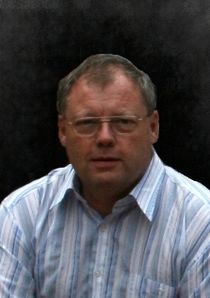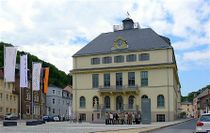 2007 2007
 Deutsches Uhrenmuseum Glashütte
Deutsches Uhrenmuseum Glashütte
|
Piet Andriessen
I learned the watchmaking trade at the Schoonhoven Gold- Silver and Watchmaking School, where I was taught by watchmakers who in turn had taken their exams with my grandfather Cornelis Andriessen. The rise of electronic watches was also clearly noticeable in the education, electronics became an important part of the training. In addition, there was certainly still the necessary attention for the craftsmanship of mechanical clocks and antiques. After the training in Schoonhoven, I followed various follow-up courses, including from Junghans in Germany, ETA and Ronda in Switzerland. I also firmly rekindled the historical bond of my ancestors with Glashütte near Dresden after the fall of the Iron Curtain. For example, I was involved in translations into Dutch for both the brands Glashütte Original and A. Lange& Söhne. I had been on friendly terms with Walter Lange who died in 2017, and to this day I have been involved in documentary research at the Glashütter Uurwerkmuseum and Lange & Söhne.
Since 2013 I have also been working for the Clock Museum in Saint Nicolas d"Aliermont near Dieppe, as the production of Chronometers in this French town is also connected to A. Lange& Söhne. This also led to a connection with the Mathematical-Physical Salon in Dresden.
With a long tradition in the jewellery and watchmaking trade, our company had an experience that can be called unique in the region. As one of the oldest businesses in Bergen op Zoom, we therefore still stood behind the motto that has determined policy for more than 170 years: "a good craftsman automatically becomes a master", combined with "expert and honest advice".
I heard about the existence of Watch Wiki in Dresden in 2006 from Torsten Mischke, during one of my trips to Glashütte. Thanks to the extensive archive and library of our business, I was soon able to help Torsten by answering some of his questions. After some time, I was able to get started with Watch-Wiki myself.
My interest in watches is not only technical, but also the history of watches and the watch industry is something that interests me very much. I have a special interest in the Glashütter watch industry and the Deutsche Uhrmacherschule located there, which is not surprising given our family tradition. From 2018 to 2014 I was deputy chairman of the association Freundeskreis Glashütter Uhrmacherkunst e.V.
Since our business has carried the Alpina Union Horlogère brand for more than 80 years, this brand can also be called one of my specialties. When this brand was reintroduced in 2003, I worked on the website of Alpina Watch International Geneva to support the history of the brand with photo material and helped set up Alpina's own collection in Geneva. The image archive of our company was largely created by myself, by photographing everything I received in the repair and found important enough.
In addition, our own collection of timepieces was also created and partly captured on film. Part of it is now at Alpina. At a certain point I was looking for an image of a famous watchmaker and discovered the American website Heroes of Horology. I exchanged images of famous watch and clockmakers with the creator of the website, Robert Terwilliger, son of Charles Terwilliger. Unfortunately, this website was stopped when the creator died, the images are now in my possession. I find the use of internal gearing and planet gears in timepieces technically interesting. A fine example of this can be found in the Lange Tourbillon and Tourbogaph “Pour le Merite”. However, the use of a planet gear in a fusee had already been used 250 years earlier by the English watchmaker Thomas Moore. A watch by Abraham Tappy is also equipped with such a mechanism.
In 2021 I decided to close the company founded in 1848 due to the lack of a successor, the monumental building was sold but the company was not finally closed until 2024.
|